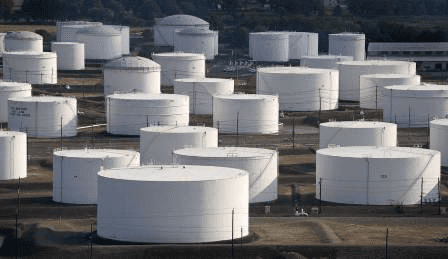The Use of Robotics For Inspection & Maintenance of Aboveground Storage Tanks

A key focus of much research into the use of robotics within the oil & gas and petrochemical industries is that of improving the inspection and maintenance process of aboveground storage tanks (AST).
Current processes are fraught with issues, and include:
- Significant and costly preparation, often resulting in months of downtime, with costs for a single tank often exceeding $2 million US dollars
- Harmful to the environment due to the emptying of contents within, and the associated release of hazardous vapours
- Emptying of an AST increases the risk of a major tank related accident, such as fires and explosions that can lead to injury and loss of life
- The risk to humans when entering such a hazardous confined space.
Whilst various robotic solutions for the inspection and repair of an AST have been around since the mid-1990s, up until now these have been fairly rudimentary – limited by technology and making them only suitable for certain niche applications.
However, around 80% of inspected tanks are returned to service without the need for any maintenance or repairs. Therefore, a solution that would negate the need to take a tank offline would be hugely beneficial. Online robotic floor inspection could be the answer.
Has technology sufficiently advanced for a realistic AST inspection and maintenance solution?
There’s no denying that this is still a work in progress. However, major advances have been achieved, such as:
- Explosion-proof crawlers and cameras
- Entry, orientation and navigation of equipment into a tank has been demonstrated in commercial services.
However, there are still various surmountable challenges to be conquered to allow for future visions of robotic technology able to carry out inspection and maintenance to a satisfactory level.
The critical aspects to overcome for a successful robotic solution have been identified as:
- The necessity of emptying the tank: Can inspection and any necessary maintenance be carried out without removing the product?
- The removal of floor debris: Unless inspection is possible through the debris and no maintenance is necessary
- Maintenance and repairs: Should the inspection determine any necessary
Visions for the future
These have been grouped into six distinct possibilities, and are listed in descending order of how advanced the current technology is:
- Offline remote inspection: Avoiding human entry and leading to far less stringent cleaning requirements. Inspection is carried out by a crawler robot, of which there are various already being demonstrated in a practical context
- Offline autonomous inspection: A step on from the above, this would cut down on time spent and improve the quality of the inspection thanks to linking the sourced data to the position in the tank
- Online remote cleaning: Once perfected this is likely to become a prerequisite for many such on and offline inspections. In some cases, and depending on the product held within the AST, this could also be advantageous for tank operation. Some such equipment does already exist and is in use, and it’s only a matter of time before the technology exists to allow for fully remote online cleaning
- Online inspection of a clean tank: To be effective such equipment will need to be explosion proof, be able to enter a full tank, have advanced orientation and navigational ability and be able to work within corrosive products or at elevated temperatures.
- Online autonomous inspection of an uncleaned tank: Autonomy will provide advantages such as lowered costs, the removal of possible human error and that of time constraints. Such a robot will need to be able to remove deposits out of the way or inspect in their presence.
- Online repair and maintenance: Being as only 20% of tanks require such work when inspected, this currently has less of a significant impact than those earlier in the list. Whilst it will likely become reality at some point in the future, the current state of technology and research into such an asset is presently at the lowest of all the planned advances.
Today’s reality
Taking current technology into account, along with proven robotic mechanisation, offline remote inspection and offline autonomous inspection are the most likely tools to become commonplace within the industry. The first applications will presumably be within clean tanks with few appurtenances, as well as within ASTs holding clear liquids, allowing for cameras to aid navigation.
However, the advantages of online remote cleaning would be extensive, allowing for more tanks to qualify for such robotic inspection. All three of these scenarios already have the base technology in place. So it will only be a matter of time before such appliances are ready for widescale use and are sure to have a highly positive effect on the industry as a whole.
Companies that use aboveground storage tanks will be keen to keep abreast of such advantageous technology. Perth-based equipment provider, Nexxis, are one of Australia’s leading suppliers of proven top quality technical equipment. Thanks to our flexible, solutions-driven approach that allows for true flexibility to address customer requirements, we’ve become a global favourite for companies requiring the ultimate in inspection, testing and measuring equipment. To find out how this unique approach can help your business make more profitable choices when hiring, leasing or buying, get in touch for more information.
